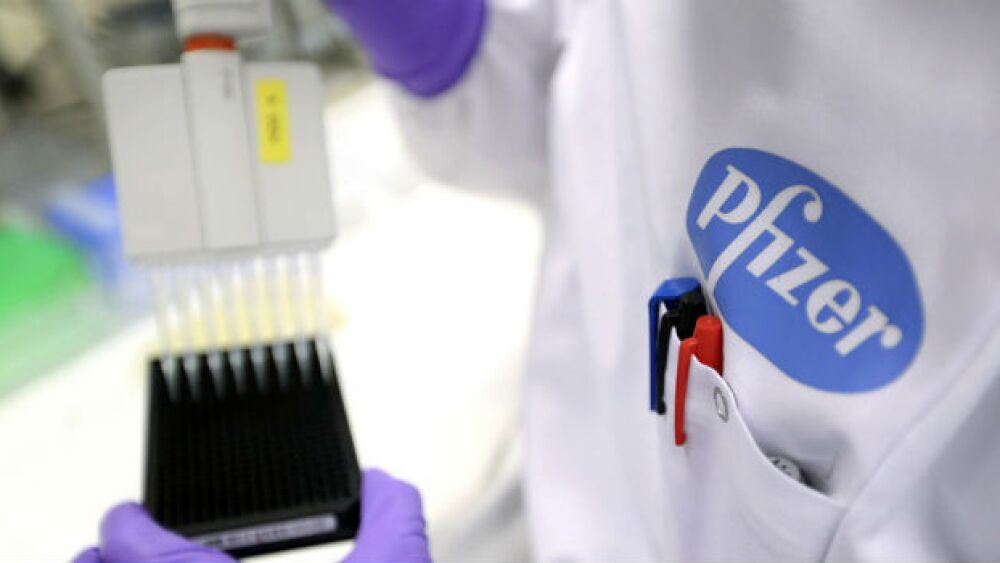Pfizer launched a new ad that celebrates diversity in its employment.
Pfizer launched a new ad that celebrates diversity in its employment. The video opens with a mother waking up to her mixed-race child jumping on the bed, to two men eating breakfast, and a woman in a hijab heading to work, in addition to other images of diversity.
These are all actual Pfizer scientists, part of its “Driven to Discover” effort. Although the campaign has multiple goals, such as branding the company as a diverse workplace—this new ad does that—but also works as a recruitment tool for attracting the best scientific talent (or talent in general), regardless of race, sex, religion, or orientation.
Each employee in the ad speaks the message in turn, “We come from different places. We look different ways. We live different ways. We worship different ways. But there’s much that we all share.”
The narration continues: “To bring the boldest, brightest thinking to the search for life-saving cures. Built on one shared understanding of the power of science.”
It ends with, “Come join the many daring different people at Pfizer. All driven by one shared goal. All driven to discover the cure.”
The “Driven to Discover” campaign is two years old. For example, in 2016, the company ran a “Company Spotlight” as part of the campaign, profiling Casey Quinlan, a Principal Scientist at Pfizer’s research campus in La Jolla, California. It has a photograph of Quinlan, and a lead paragraph, “Casey Quinlan might not look like a superhero, but she is. Every day when she comes to work at Pfizer’s research campus in La Jolla, Calif., as one of the company’s Principal Scientists, she’s helping to save lives, including one person very close to her.” The profile then goes on to briefly discuss how a recently approved cancer drug was used to treat a family member, then has several Pfizer executives discussing qualities the company celebrates and looks for—curiosity, teamwork, dedication.
Sally Susman, Pfizer’s executive vice president of corporate affairs, told FiercePharma, “The tagline at the end of the ad ‘Driven to discover the cure’ I think represents the motivation for most people who work here. Everybody here has some story about their loved ones or family that motivates them, that makes them stay here late and get here early. It’s not an industry where people are driven by large amounts of fame or ego. I have found people to be just incredibly modest, hardworking and incredibly bright. I consider it my mission to expose those people to the rest of the world who may have a different view of what it means to work at a big pharma company.”
Pfizer placed an internal casting call to find the 18 employees featured in the new ad. Susman indicates that some were excited about it, while others showed up on a whim. The new ad is designed to stimulate interest in the company by potential employees, and the company clearly wants to send the message that Pfizer values diversity, science and its people. “We want people to know Pfizer is a great place to pursue your scientific career no matter what your background, experience, race, or orientation is,” Susman told FiercePharma.
It’s not clear how the biopharma industry as a whole ranks on diversity. Anecdotally, one would expect that in the scientific ranks, ethnic diversity isn’t much of a problem. It’s clear, however, that there are issues with gender diversity. As a 2017 Fortune 500 list of biopharmaceutical companies showed, of the top 10 biopharmaceutical companies, none were led by a woman. And, in fact, of the 2017 Fortune 500 companies, only 32 were led by women, although many of those are well-known companies—General Motors, IBM, PepsiCo, Lockheed Martin, for example.
Rob Wright, chief editor of Life Science Leader, noted in a February 2018, article looking at gender diversity in biopharma, “Leading biopharmaceutical companies are on par with other large publicly traded companies in a variety of other industries. While the biopharmaceutical industry is not in ‘horrible shape’ when it comes to ELT gender diversity, there is certainly need for improvement. As this comparison illustrates, none of the 10 biggest biopharmaceutical companies are the worst, or the best, which isn’t very surprising as the pharmaceutical industry is traditionally considered fairly conservative. However, as an industry which consistently boasts of being one of the most innovative in the world, you’d think it would be striving to lead in other important areas as well.”
And it appears that Pfizer is attempting to do so.





